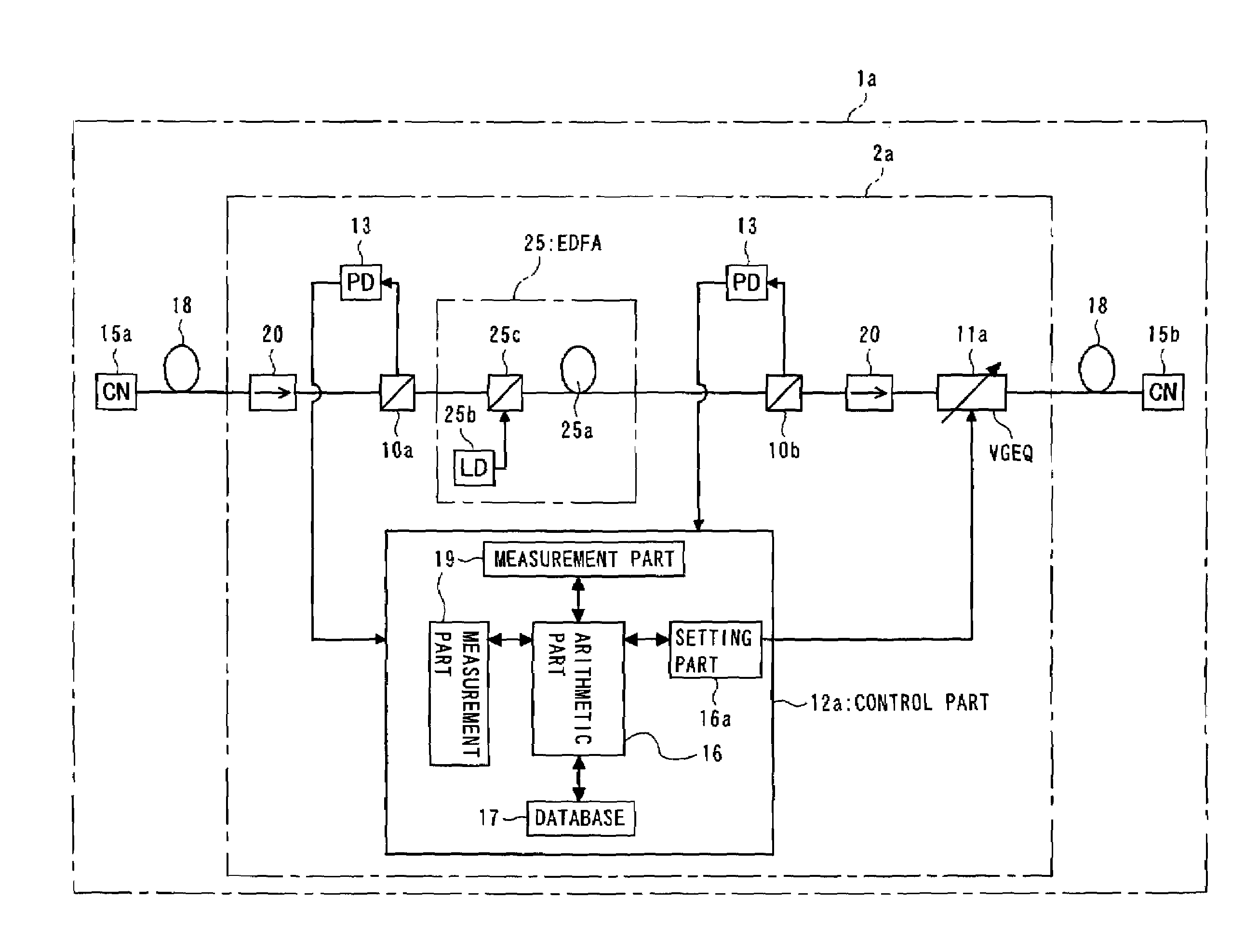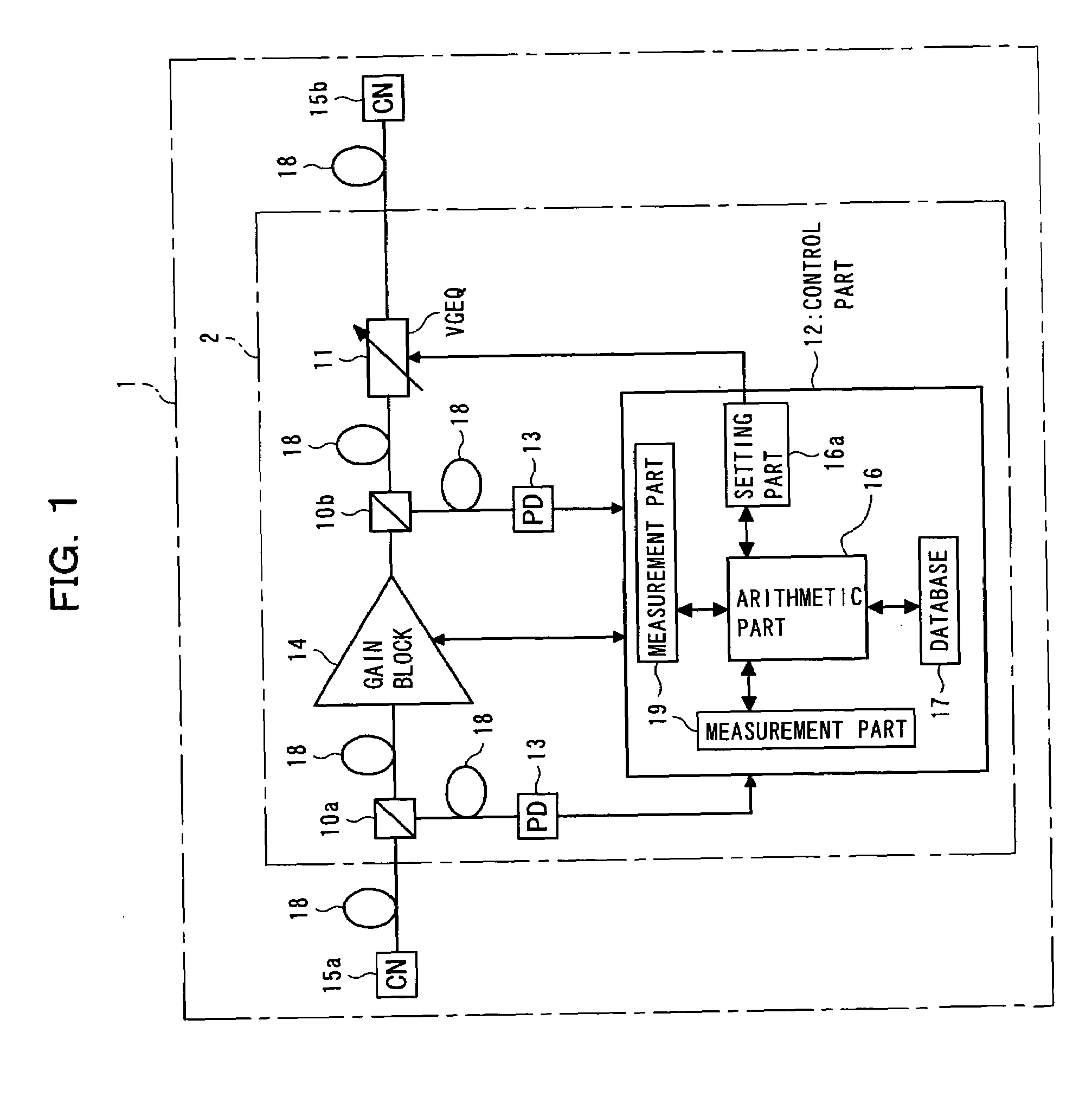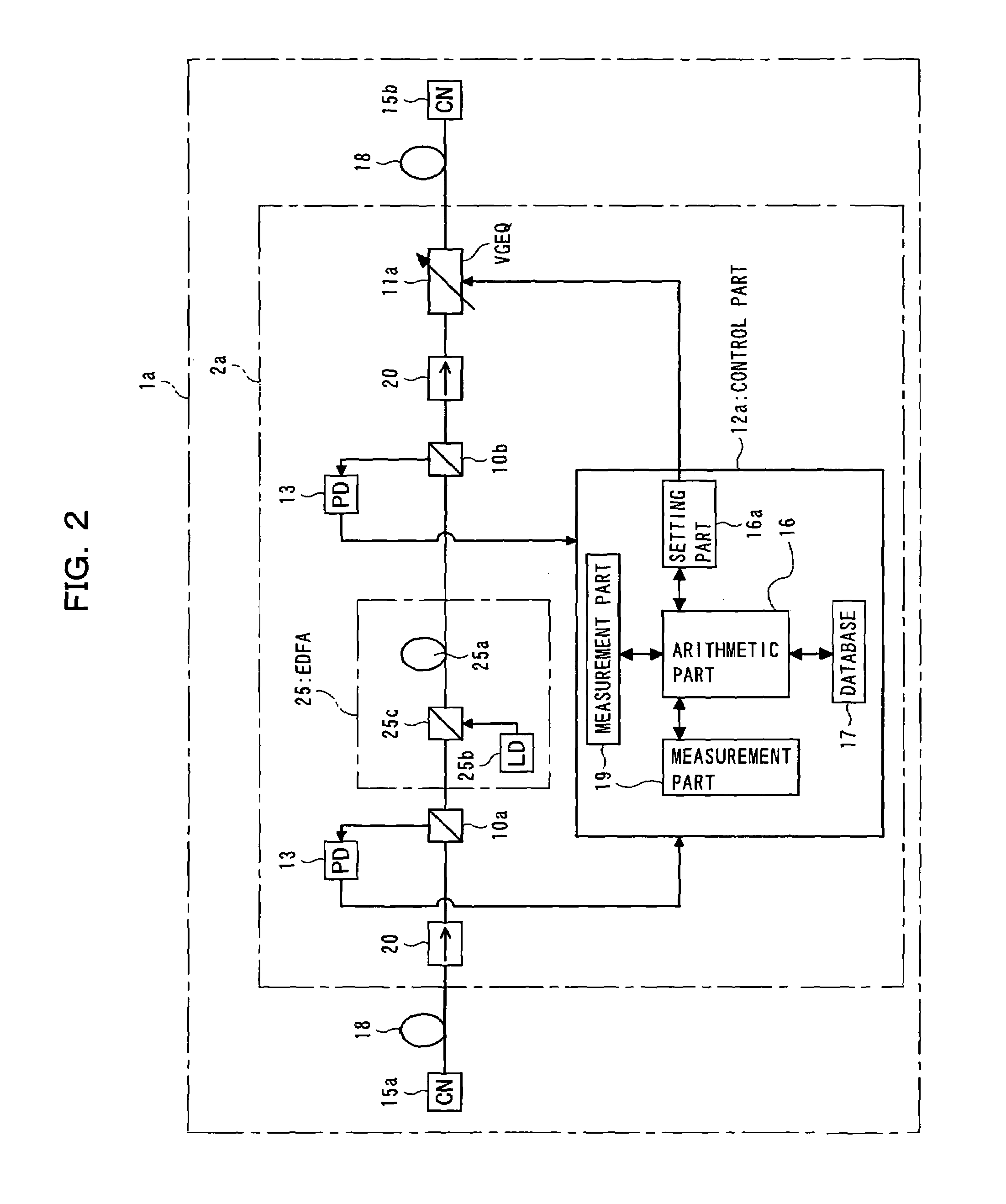Optical amplifier with variable gain equalization
a technology of optical amplifier and variable gain equalization, which is applied in the field of optical amplifier, can solve the problems of unfavorable optical signal quality, unfavorable optical signal wavelength characteristic of erbium-doped fiber of the first stage, and unfavorable optical signal wavelength characteristic of the erbium-doped fiber of the second stage, so as to achieve the effect of stabilizing the optical transmission system
- Summary
- Abstract
- Description
- Claims
- Application Information
AI Technical Summary
Benefits of technology
Problems solved by technology
Method used
Image
Examples
first embodiment
[0081](A) Description of the First Embodiment
[0082]FIG. 1 is a diagram to explain the principle of operation of an optical transmission system to which the present invention is applied. The optical transmission system 1 shown in the figure is a system to transmit wavelength-division-multiplexed (WDM) light and is equipped with core networks (CN) 15a, 15b, a transmission line (fiber) 18, and an optical amplifier 2.
[0083]The core networks 15a, 15b are both trunk circuits to perform large-capacity optical transmission. The transmission line 18 is used for transmitting optical signals. Also, the optical amplifier 2 is used for amplifying WDM light that travels through the transmission line 18.
[0084]In the following description, the transmission direction of optical signals is assumed to be a direction from the first core network 15a toward the second core network 15b, unless otherwise specified.
[0085]This optical amplifier 2 serves, for example, as a booster that boosts the strength of ...
second embodiment
[0134](B) Description of the Second Embodiment
[0135]In a second embodiment of the present invention, a description will be given in the case where the gain block 14 (see FIG. 1) is constructed of a Raman fiber amplifier.
[0136]FIG. 8 is a diagram showing an optical WDM transmission system constructed in accordance with the second embodiment of the present invention. The optical transmission system 1b shown in the figure is used for transmitting WDM light and is equipped with a transmission line (Raman fiber amplifier) 18a having a Raman amplification function, and an optical amplifier 2b which outputs excitation light and monitors optical power. The control part 12b of the optical amplifier 2b computes the passing-wavelength characteristic of an optical filter 11a and sets the inverse of the computed passing-wavelength characteristic to the optical filter 11a. The control part 12b is equipped with a measurement part 19, a database 17, an arithmetic part 16, and a setting part 16a.
[0...
third embodiment
[0146](C) Description of the Third Embodiment
[0147]A third embodiment is an alteration of the first and second embodiments. In the optical transmission system 1a or 1b with the optical amplifier 2a or 2b, the type and length of input-side transmission line 18 used are obtained from upstream supervisory (SV) light. This SV light contains information about the type of transmission line 18, transmission line length, etc. The SV light is an optical signal with a wavelength differing from wavelengths allocated to WDM light.
[0148]FIG. 9 shows an optical transmission system constructed in accordance with the third embodiment of the present invention. The optical transmission system 1c shown in the figure is equipped with optical WDM terminal stations (hereinafter referred to as terminal stations) 30, 31, again block 14, optical couplers J1 to J8 contained in an optical amplifier 2a (or 2b), and a coupler 32. Note that optical signals are transmitted in a first direction from the first term...
PUM
| Property | Measurement | Unit |
|---|---|---|
| wavelength | aaaaa | aaaaa |
| wavelength | aaaaa | aaaaa |
| optical power | aaaaa | aaaaa |
Abstract
Description
Claims
Application Information
 Login to View More
Login to View More - R&D
- Intellectual Property
- Life Sciences
- Materials
- Tech Scout
- Unparalleled Data Quality
- Higher Quality Content
- 60% Fewer Hallucinations
Browse by: Latest US Patents, China's latest patents, Technical Efficacy Thesaurus, Application Domain, Technology Topic, Popular Technical Reports.
© 2025 PatSnap. All rights reserved.Legal|Privacy policy|Modern Slavery Act Transparency Statement|Sitemap|About US| Contact US: help@patsnap.com



